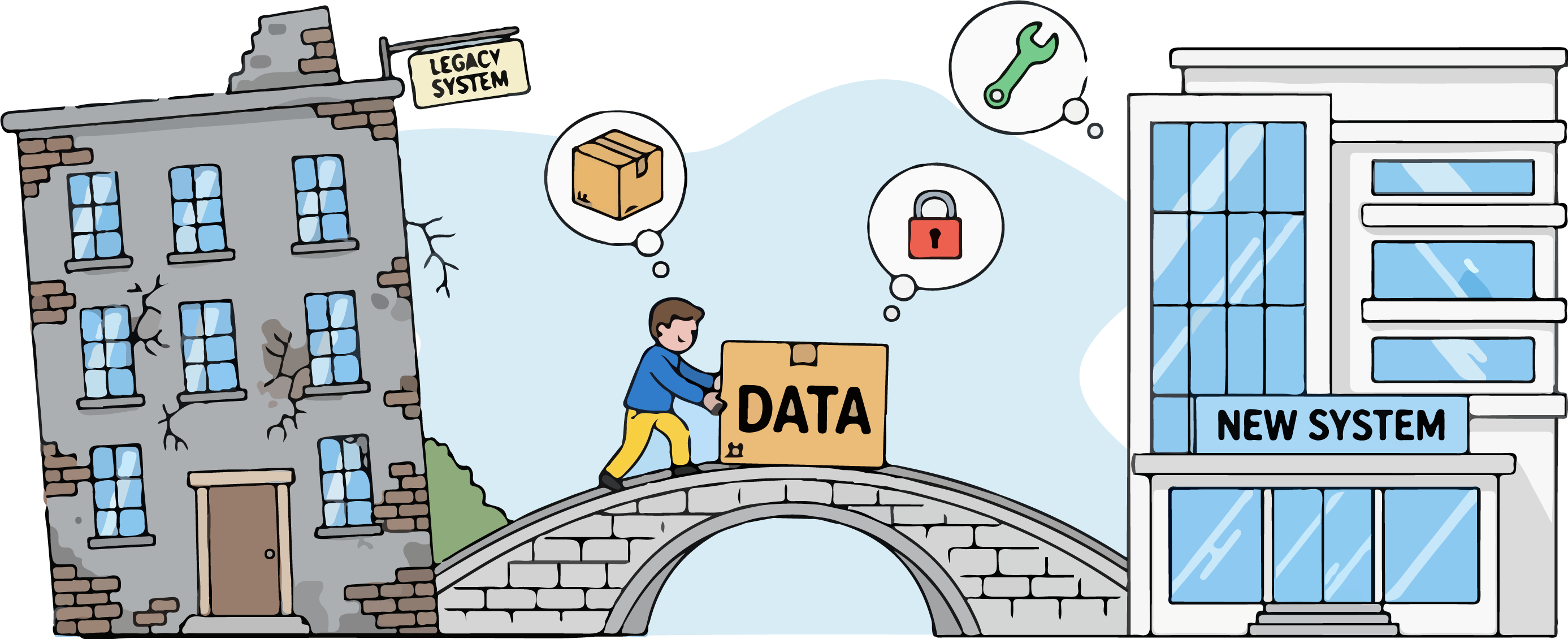Now Reading: Agile Backlog Refinement: Legacy System Migration Case Study
-
01
Agile Backlog Refinement: Legacy System Migration Case Study
Agile Backlog Refinement: Legacy System Migration Case Study
How “Enterprise Forward” planned the complex, year-long migration from a tangled monolith to a modern microservices architecture.

The Challenge: How Do You Eat an Elephant?
Enterprise Forward was being held back by its 10-year-old monolithic application. It was slow, fragile, difficult to update, and expensive to maintain. The CTO initiated a critical, company-wide goal: migrate the monolith to a modern microservices architecture. The problem was the sheer scale and complexity of the project. It existed as a single, terrifying item on the roadmap: “Migrate the Monolith.” The engineering team was paralyzed, unable to figure out where to start, how to sequence the work, or how to show meaningful progress on such a long-running, high-risk project.
The Solution: Deconstruct, Assess, and Sequence with Precision
The lead architect used the Agile Backlog Refiner to facilitate a series of workshops with senior engineers, aimed at deconstructing the monolith into a clear, manageable, and sequenced plan.
- Decomposing the Monolith by Domain (Step 2): The first and most critical breakthrough was to stop thinking of it as one project. Using the Decompose Epics feature, they created epics based on the logical business domains trapped within the monolith: “Extract User & Authentication Service,” “Extract Billing & Subscription Service,” “Extract Inventory Management Service,” and “Extract Reporting Service.” This immediately broke the impossibly large project into logical, independent chunks.
- Mapping the Interdependencies (Step 3): For each new microservice epic, they created PBIs for the necessary work, such as “[User Service] Build authentication endpoints,” or “[Billing Service] Create new subscriptions database schema.” As they created these PBIs, they meticulously used the “Dependencies” field to map the complex relationships. It became clear that the “Billing Service” was critically dependent on the “User Service” being completed first. This dependency mapping created a clear critical path for the entire migration.
- Identifying and Planning for a Major Risk (Step 5): In the Risk Assessment step, the team identified a significant, project-threatening risk, primarily around data migration. For the “Extract Billing Service” epic, they added a major risk: “High risk of data integrity loss during migration of historical transaction data.” The mitigation plan was to build and extensively test a suite of data validation scripts. This mitigation plan wasn’t just a note; it was added as a separate, high-priority PBI with a significant story point value, ensuring the work was formally planned and resourced.
- Visualizing a Phased Rollout (Step 6): The sprint planning view was not used to plan a single “go-live” date. Instead, it became a high-level visualization of a phased rollout. The plan showed that the first quarter was dedicated entirely to building and deploying the “User Service.” The second quarter focused on the “Inventory Service.” The Final Report provided a clear, multi-quarter roadmap that the CTO could use to communicate progress and manage expectations with the board.
The Outcome: A Manageable, Transparent, and De-Risked Migration
The paralysis was broken. The team now had a clear, step-by-step plan for a project that once seemed impossibly large and risky.
- From “Big Bang” to Incremental Progress: The team could now demonstrate tangible progress and deliver value every quarter by successfully extracting and deploying one or two new services. This boosted team morale and maintained stakeholder confidence over the long haul.
- A Clear, Logical Sequence: The dependency mapping ensured that they were building foundational services first, preventing costly rework and nightmarish integration problems down the line.
- Proactive Risk Management: By identifying and formally planning for critical risks like data migration, they allocated the necessary time and resources to handle them properly, turning a potential disaster into a well-managed technical challenge.
The Agile Backlog Refiner was the key to taming the complexity of the monolith. It provided the framework to deconstruct a massive undertaking into a sequenced, risk-assessed, and fully actionable year-long strategic plan.
Tool Spotlight: How the Refiner Made the Difference
- Domain-Driven Epics (Step 2): The ability to structure the work around business domains (as epics) was the perfect way to model a microservices decomposition, making the plan intuitive and logical.
- The Dependencies Field (Step 3): For a migration project, this was the most critical feature. It made the invisible architectural dependencies visible to everyone, dictating the entire sequence of the project.
- Risk Register (Step 5): Formalizing risks and creating PBIs for mitigation plans ensured that the most dangerous parts of the project received the attention and resources they required from the very beginning.

